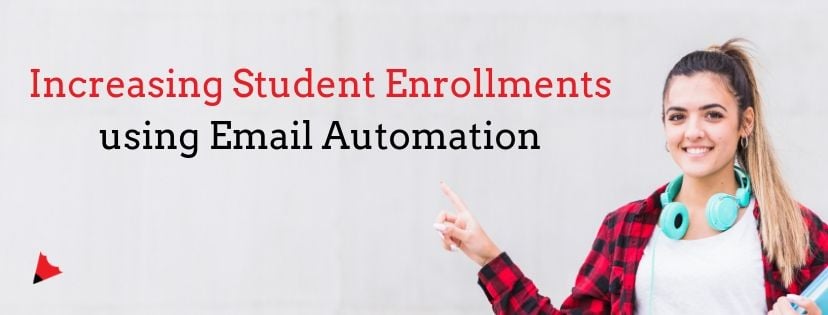
Marketing to students can be challenging in today’s world, especially with so much digital clutter surrounding them.
Their newsfeed is filled with ads from hundreds of brands, fighting for their attention everyday
From fashion and food, to gadgets and gizmos, their already-short attention span is bombarde with messages every single day.
How do you then, as a Higher Education professional, use digital marketing to generate quality leads and turn them into successful enrollments?
In the case of educational institutions - schools and universities, things can get a little overwhelming if you don’t deploy your digital marketing funnel correctly.
Picture this:
You’re running a lead generation campaign using social media and most likely, Google Adwords too.
The ad creative is decent.
The post text is informative and persuasive.
The targeting is just about right.
But when it comes to follow-up emails and conversion-specific communication, your efforts fall flat.
Do you wonder why your lead-nurturing emails aren’t working?
What could be the possible reason leads aren’t converting into paying students?
This article will help you navigate the tough trenches of email marketing, containing best-performing email marketing automation frameworks and much more!
And the best part is?
The frameworks I share, are SPECIFICALLY for higher education marketing, which means, this isn’t another article with some generic fluff on email automation.
You can literally pick and apply these strategies immediately.
Just a quick note.
This article is slightly technical in nature and covers major aspects of email marketing automation for universities (and high schools).
If you want to first get started with using digital marketing for higher education, check out the article below.
It covers everything you need to do BEFORE using email automation for lead nurturing.
If you’re a beginner to higher education marketing, I recommend you to read the above article first.
I’ve written it in a simplified manner to help you understand the art of digital marketing for schools, colleges and universities.
That’s when you’ll be better equipped with the strategic know-how for running email marketing campaigns.
Why Should you Use Email Marketing Automation for Increasing Enrollments?
Nurturing leads (students & their parents) can be frustrating, especially when you’re not using email marketing automation to automate all mundane follow-up tasks.
The intensity of follow-up work increases drastically if your digital marketing campaign is delivering great results and filling your database with leads.
And if you’re manually sending emails by creating multiple tabs of students across different stages of follow-up, it’s a recipe for a disaster.
I do agree and understand that prospects expect diligent follow-ups, multiple times at different intervals.
Why not deploy email marketing automation to strategically send the right emails to the right leads at the right time?
In fact, you can use some highly reliable marketing automation platforms out there, like HubSpot, Mautic and Marketo.
By using these tools, your university can create and send personalized emails for students at various stages of their enrollment journey (more on this later in the article.)
Let me blow your mind with some stats on marketing automation, that’ll totally change the way you approach lead nurturing activities.
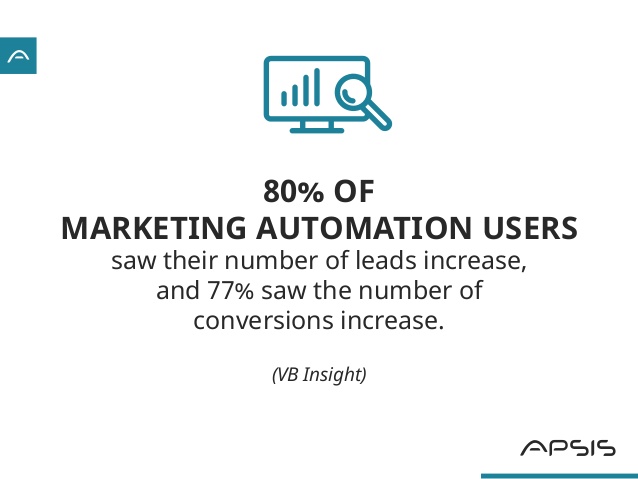
Companies that excel at lead nurturing generate 50% more sales ready leads at a 33% lower cost (Marketo).
Moreover, businesses that use marketing automation to nurture prospects experience a 451% increase in qualified leads (The Annuitas Group).
You’ll be surprised to know that lack of lead nurturing is the common cause of poor performance. (Source: MarketingSherpa)
Now that you understand the importance of email marketing for increasing student enrollments, let’s move on to the most-awaited section of this article.
The secret sauce of increasing college admissions using strategic, automated emails.
Secret #1) Understand the Student Enrollment Journey
Choosing the right university is one of the biggest life decisions for students and parents, alike. It’s a decision that involves time, research, skepticism, reviews and so much more.
Since these decisions take time to manifest and eventually convert, you should approach marketing from a holistic point of view.
In other words, to be successful at filling up your college seats every year, your email marketing activities should revolve around the life-stage of the target audience.
Here’s what the Student Enrollment Journey looks like:
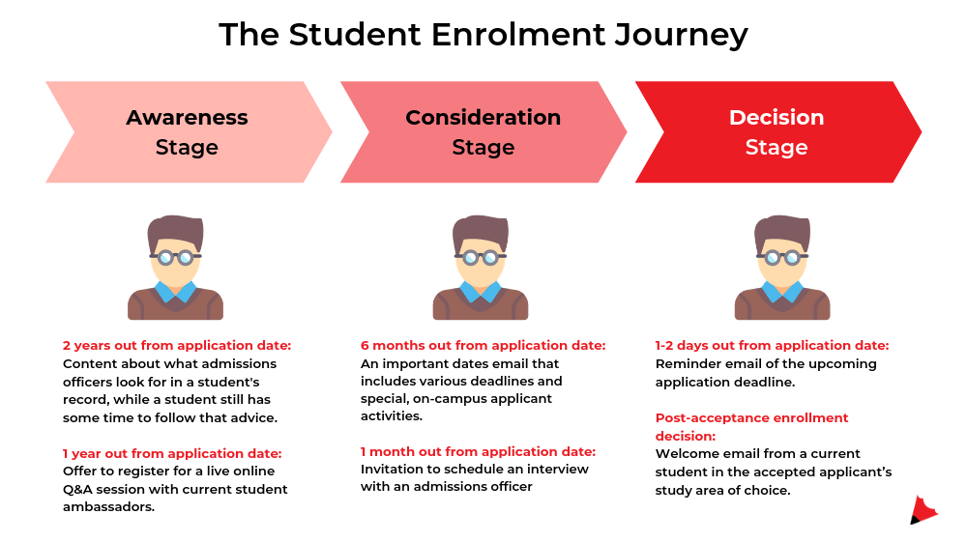
Remember this formula:
TIMING + CONTENT = ALIGNING EMAILS TO THE STUDENT ENROLLMENT JOURNEY
Your prospect’s enrollment style works similarly.
You have to create content that’s relevant for their stage of lifecycle.
Emailing a high school kid with a link to download your college application form simply won’t cut it.
Not only does it make no sense, but you’re also seen as spammy and irrelevant, making it super-easy for them to ignore all communication from your side.
Need help in defining the perfect target audience for efficient marketing?
Use this article to produce data-backed, accurate marketing personas.
Secret #2) The Right Framework for Sending Automated Emails
It’s a proven fact that email marketing works wonders for generating student enrollments for the higher education segment.
The best universities around the world use automated emails to convert interest to inclination, and eventually into enrollment.
Due to their versatility and ability to follow-up within context, automated emails are one of the top weapons in the marketing cavalry of any educational institution.
To run a successful lead-nurturing email campaign, you should set up series of emails that revolve around the different pain-points, doubts, possible questions and inhibitions of your target student.
Once designed and set up, these emails can be automated to be sent at designated times to slowly push leads towards the bottom of your funnel, while softly prompting them to take the next step towards the application process.
As promised, here’s an example from the University of Oxford using email automation to send me regular emails about a blockchain strategy program I had shown interest in.
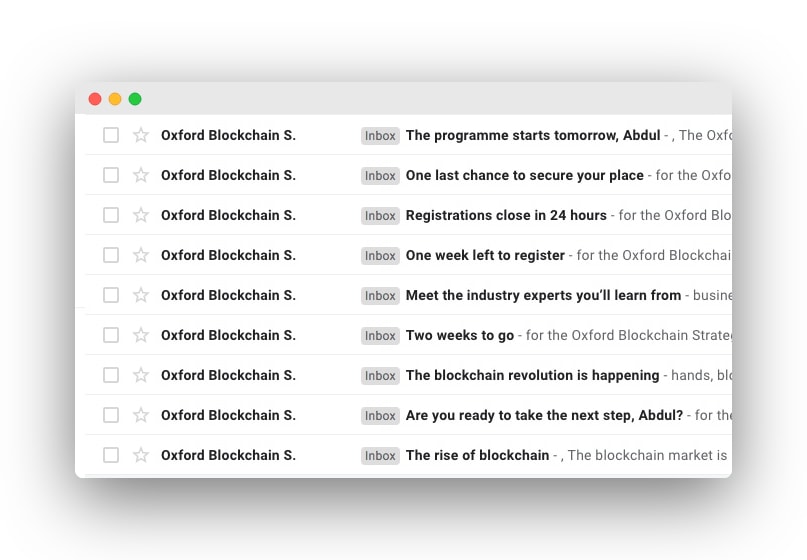
You’ll notice how they not only send me blatant reminders about the closing date of the registration, but also send me informative content about blockchain to pique my curiosity.
The tactic here is to provide me with valuable information while creating a “program scarcity” so I act fast and register before it’s too late.
Although this might appear simple and straight-forward, there’s a bigger strategy working in the background.
Putting this strategy and long-term marketing vision requires research, planning, understanding of one’s target audience, creativity, design work and most importantly, the technical know-how to conduct email automation at this scale.
You really have to think about the overall strategy from start to end.
The “content offer” that can lure your target audience has to be planned and kept ready for digital advertising.
The communication theme and design also play a major role in the success of your lead-nurturing email marketing automation.
To make marketing for higher education simpler for you, here’s the framework I’ve been referring to all this while.
This workflow will help you get started with email sequencing and creating appropriate call to actions.
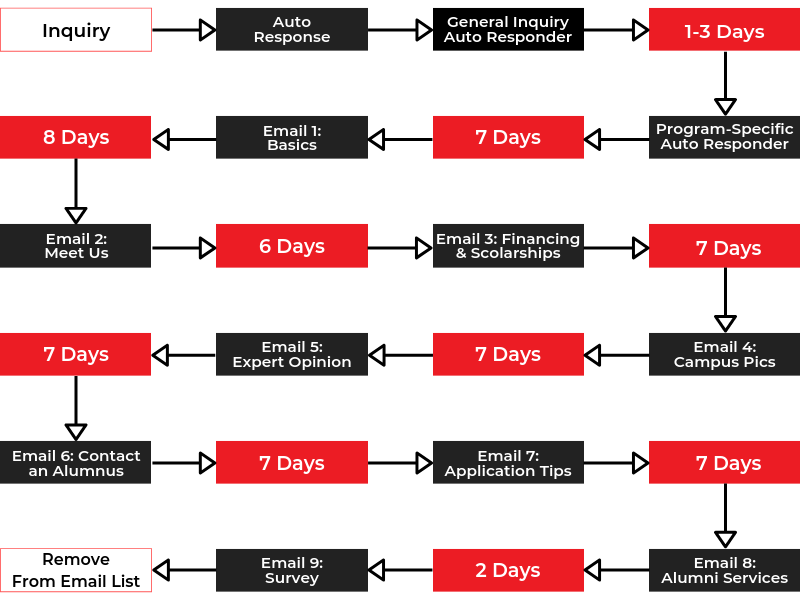
Conclusion:
Using email automation for universities isn’t the most challenging part.
It’s the strategic background work you have to do, in order to make sure your leads convert.
Before developing your tactical email marketing plan, you must have a strategy.
But before having a strategy, you need to build a proper marketing system first.
This helps you keep the “bigger picture” in mind, that will govern all your further activities.
There’s indeed stiff competition from other universities and institutions in the UAE, and that won’t change anytime soon.
What you can do is to have a robust, documented strategy in place to lay down each marketing element such as: your target audience, the content offer, the campaign theme, plan of communication, email marketing workflow, etc.








